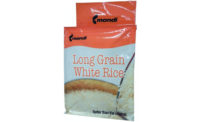Cosmetics Brands Evolve Into Diverse Personalities
![]()
Cosmetics Brands Evolve Into Diverse Personalities
Eschewing the sole cues of glamour and style, today’s cosmetic packaging exhibits individualism, aspiration and attitude.
By Nicolas Aparicio
Like many other segments of consumer packaged goods, the cosmetics category is crowded and hyper-competitive. Yet it continues to grow and thrive, with countless numbers of fledgling brands joining the ranks of well-established icons.
To win the hearts and wallets of consumers, successful cosmetics brands do not compete on functional benefits alone. They also focus on a unique core idea and communicate it through packaging that expresses a distinctive brand personality.
No amount of clever packaging will ever compensate for a sub-standard product. Quality is the cost of entry. But brands that also fail to deliver a unique experience will have a difficult time differentiating themselves from competitors.
Today’s cosmetics brands reveal just how much brand personalities have evolved in order to continue building relationships with consumers. This process is most obvious in the color cosmetics category, but the skin-care aisle is starting to adopt it as well.
Enduring brand icons
Enduring brands with well-established caché, such as Chanel and Christian Dior, grew on the ideas of glamour, exclusivity and taste. These highly aspirational brands combine traditional visual cues like hot-stamping, high-gloss materials and gilding with attention to detail to create structural packaging that conveys a premium feel.
But cult status on the scale of brands like Chanel and Dior is difficult to achieve today because there are only so many ways that marketers can own and package the traditional notion of glamour.
Several years ago, the mature and increasingly crowded cosmetics category reached the point where glamour was no longer a differentiating idea.
For this reason, recent growth has come through awareness that cosmetics brands can and should be as diverse and distinctive as the women who buy them.
Speaking a new visual language
As a result, cosmetics brands have started to speak a new, very personal visual language that is rooted in emotion and attitude. This visual language enables a woman to choose brands that affirm and express her own personality. It allows her to answer the question, “If this product were a person, what would she be like?” And even more importantly: “If it were a person, would I like, trust or admire her?”
BeneFit cosmetics presents a brand personality that offers women a means of communing with their inner diva. BeneFit utilizes a fanciful illustration style and bold typography to communicate a brand personality built around the ideas of individuality, free-spiritedness and imagination.
Vibrant, evocative imagery printed on a mixture of matte paper substrates and high-shine plastics give the brand a whimsical yet diva-driven feel. And unlike more monolithic brands, which rely on a very consistent packaging look and feel, BeneFit differentiates itself by building compelling stories around individual products like Dear John facial cream, Bad Gal Lash and She-Laq.
While this seemingly less focused approach to brand building can be somewhat unpredictable, for now it works to BeneFit’s advantage by enabling the brand to create an element of surprise and discovery around each product that, in turn, translates into a broader brand experience.
Simple and honest
In dramatic contrast Clinique and Philosophy take two different approaches to packaging that embodies freshness, simplicity and honesty.
In past decades, before the cosmetics industry had created brands for young girls, many teenagers were initiated into the world of cosmetics through Clinique. Its simple packaging structures, use of pastel colors—particularly its ownership of light green—and clean typography give the brand a trustworthy, approachable and pure feel that continues to appeal to women of all ages.
Philosophy uses a very different design convention to communicate the qualities of trustworthiness and simplicity. Its packaging relies almost exclusively on typography that speaks in a consistent brand voice to the idea of honest wisdom and valuable advice.
Philosophy products, like Purity one-step facial cleanser and Amazing Grace all-in-one shampoo, bath and shower gel, speak directly to the consumer and let her know exactly what kind of experience she’ll get.
This approach enables Philosophy to create packaging that is immediately recognizable, easy to extend and cost-effective to produce. Moreover, because Philosophy succeeds in presenting a cohesive brand image, it does not have to rely on traditional design cues like hot-stamping to signal high quality and command premium prices.
On the path to beauty nirvana, a relatively new family of cosmetics has emerged to enlighten and guide consumers. While these brands tend to lack distinctive personalities of their own, their strength lies in the reputation of their founders—well-known make-up artists like Bobbi Brown and Trish McEvoy.
Such brands rely on minimalist packaging to convey authority and expertise, and to preserve their base cult of personality. While these types of brands typically build themselves on reputation and technique, they also use structural packaging to communicate their modern approach to beauty.
Trish McEvoy’s user-friendly cosmetics kit comes in three sizes and resembles a three-ring binder, which enables women to quickly customize their look. Through this kind of innovation in structural packaging, the brand is able to communicate a personality that meets the changing needs of the savvy modern woman.
But brand personality is not limited to the realm of color cosmetics. The skin care aisle is starting to adopt this as well.
Scientific backing
Cosmeceuticals—another recent addition to the cosmetics category—has succeeded by creating brand personalities based on scientific authority, beauty know-how and trust.
This new segment marks a significant departure from cosmetics’ glamorous origins and, as such, makes it even more critical to develop packaging that clearly communicates the brand personality—one that is both approachable and authoritative, as well as able to compete side-by-side with more traditional and established cosmetics brands.
The N.V. Perricone, M.D. brand distinguishes itself through packaging that harkens back to neighborhood pharmacies from decades past, where customers built life-long relationships with trusted pharmacists.
Simple brown glass vials with white labeling and familiar typography serve to reinforce the message that the brand is serious, reliable and focused on delivering results. BP
The author, Nicolas Aparicio, is Executive Creative Director at Landor Associates (San Francisco), a brand identity and package design firm.
Contact him at nicolas_aparicio@sfo.landor.com.
Contact him at nicolas_aparicio@sfo.landor.com.
Looking for a reprint of this article?
From high-res PDFs to custom plaques, order your copy today!







